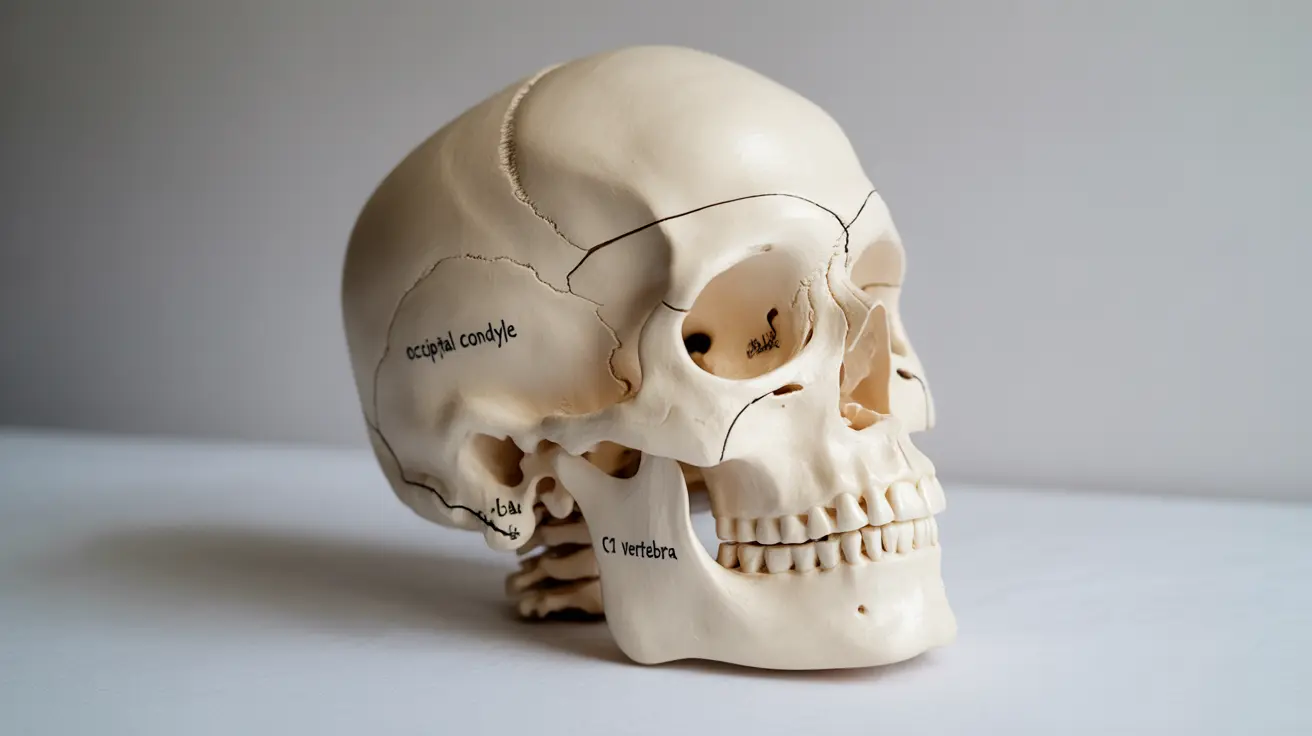An occipital condyle fracture is a serious injury affecting the base of the skull where it connects to the spine. This rare but significant fracture requires prompt medical attention and careful management due to its proximity to critical neurological structures. Understanding the symptoms, diagnosis, and treatment options is crucial for healthcare providers and patients alike.
While these fractures can occur from various traumatic events, they most commonly result from high-impact accidents or severe head injuries. Their location near vital brain and spinal cord structures makes proper diagnosis and treatment essential for preventing long-term complications.
Understanding Occipital Condyle Fractures
The occipital condyles are paired bony structures located at the base of the skull that form a crucial joint with the first cervical vertebra (C1). These structures are vital for head movement and stability of the craniovertebral junction. When fractured, they can potentially affect various neurological functions and neck mobility.
Signs and Symptoms
Recognizing the symptoms of an occipital condyle fracture is crucial for early intervention. Common indicators include:
- Severe neck pain and stiffness
- Restricted head movement
- Headache, particularly at the base of the skull
- Difficulty swallowing (dysphagia)
- Nerve-related symptoms such as numbness or weakness
- Upper neck tenderness
Diagnostic Procedures
Accurate diagnosis of occipital condyle fractures requires sophisticated imaging techniques and careful clinical evaluation. Modern diagnostic approaches typically include:
- CT scans (the gold standard for diagnosis)
- MRI imaging for soft tissue assessment
- Neurological examinations
- X-rays (though less reliable for this specific injury)
Treatment Approaches
Conservative Management
Many occipital condyle fractures can be treated non-surgically through:
- Cervical collar or brace application
- Pain management medications
- Restricted movement protocols
- Regular monitoring of neurological status
- Physical therapy (during recovery phase)
Surgical Intervention
Surgery may be necessary in cases involving:
- Significant displacement of bone fragments
- Instability of the craniovertebral junction
- Compression of neural structures
- Failed conservative treatment
Recovery Process
Recovery from an occipital condyle fracture typically involves several phases and careful monitoring. The process usually includes:
- Initial immobilization period (typically 6-12 weeks)
- Gradual return to normal activities
- Rehabilitation exercises
- Regular follow-up imaging
- Ongoing neurological assessments
Frequently Asked Questions
What are the common symptoms that indicate an occipital condyle fracture?
Common symptoms include severe neck pain, restricted head movement, headaches at the skull base, difficulty swallowing, and potential neurological symptoms such as numbness or weakness. These symptoms typically appear following head or neck trauma.
How is an occipital condyle fracture diagnosed and which imaging tests are most effective?
CT scanning is the gold standard for diagnosing occipital condyle fractures. MRI may be used to assess soft tissue damage, while neurological examinations help evaluate nerve function. Traditional X-rays are less reliable for detecting these specific fractures.
What treatment options are available for occipital condyle fractures and when is surgery necessary?
Most occipital condyle fractures can be treated conservatively with cervical collars and pain management. Surgery becomes necessary when there's significant bone displacement, craniovertebral junction instability, or neural compression.
How long does it take to recover from an occipital condyle fracture with conservative treatment?
Recovery typically takes 6-12 weeks of initial immobilization, followed by a gradual return to normal activities. Complete recovery may take 3-6 months, depending on the severity of the injury and individual healing factors.
What complications can arise from untreated or unstable occipital condyle fractures?
Untreated or unstable fractures can lead to chronic neck pain, permanent mobility restrictions, neurological deficits, and potential damage to surrounding vital structures. Long-term complications may include craniovertebral instability and chronic pain syndromes.




